Ok, here’s wrinkle in the LS world that we had no idea was coming and it is a BIG one. Mercury Racing, the people that make all the awesome boat engines pulled the wraps off of a new engine design that they are currently working on at SEMA 2014. This engine is a DOHC, four valve per cylinder V8 that is based on a GM LS series engine. The particular yellow example you are seeing below is built off of a 6.2L LS3 engine and it is 100% totally awesome. Mercury is working on the design and they have not yet embarked on performance and durability testing so repeated questions out power output were brushed off no matter how sneakily we asked them. One thing we did find out that gives us a little bit of an idea of the power potential of this beast is the fact that the heads move MORE than 400 CFM on the intake side. Unless we’re way out in left field, that means that naturally aspirated this thing could be making 900hp and with boost? Holy smokes.
In place of the camshaft in the block there is a dummy shaft that rides in the first two journals and stops. This is done for oil control we’re guessing. One of the things that was interesting to think about is the fact that you could run a really wild stroker crank in this engine because there’s no cam interference to worry about, right? The gilmer belt style cam drives will be tested and punished until they are refined enough to stand up to 500 hours of running. That’s one of the standards we heard the Mercury Marine guys reference a lot. 500 hours is a big deal for them in the marine world and it equates (roughly) to about 100,000 miles of land based use.
The heads are absolutely freaking awesome. On the exhaust side, while the ports are relocated dramatically they are spaced the same as a regular LS engine so normal headers bolt up to the mill. The engineers said that the Kooks headers you see on the engine here were ordered straight from the Summit racing catalog. The camshafts are specially made by Mercury and when we got into thinking about hot rodding the engine we were informed that there is a lot of time in the lobe design of those shafts and it would be hard to really get much more out of them without running into some geometry issues.
The heads are multi-pieces. The “valve cover” is a thick and flat plate. Below that is another removable plate that would allow the cams to be taken out without the bottom of the head to have to come off of the block. After you get to those bolts on the bottom of the head you’ll notice that they (obviously) have the same bolt pattern as standard issue LS heads. With regard to the block, the only thing they did was to add that stub shaft in the place of the traditional cam. The intake valves measure 1.669 inches and the exhaust valves measure 1.319 inches.
We can’t wait until we hear one run on a dyno!
SCROLL DOWN TO SEE THE MERCURY RACING “SMALL BLOCK FOUR VALVE” WHICH IS A DOHC, FOUR VALVE PER CYLINDER LS ENGINE –








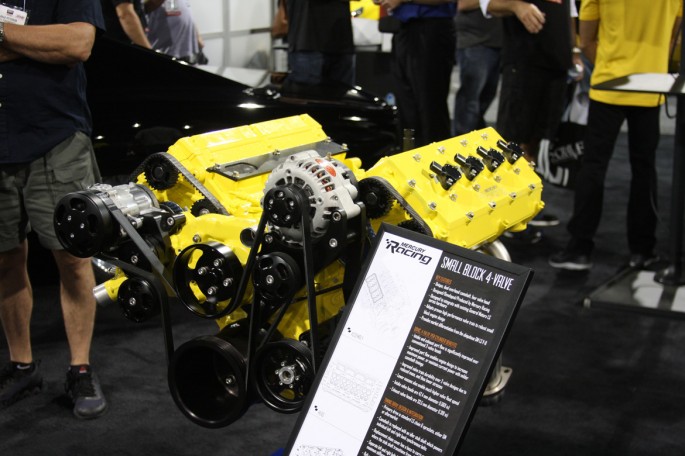
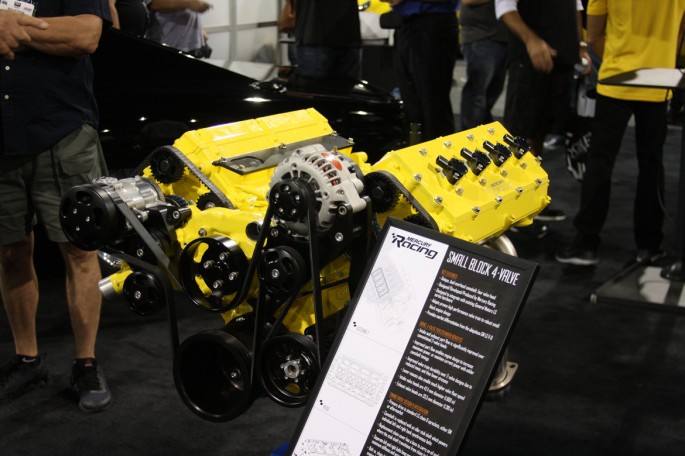
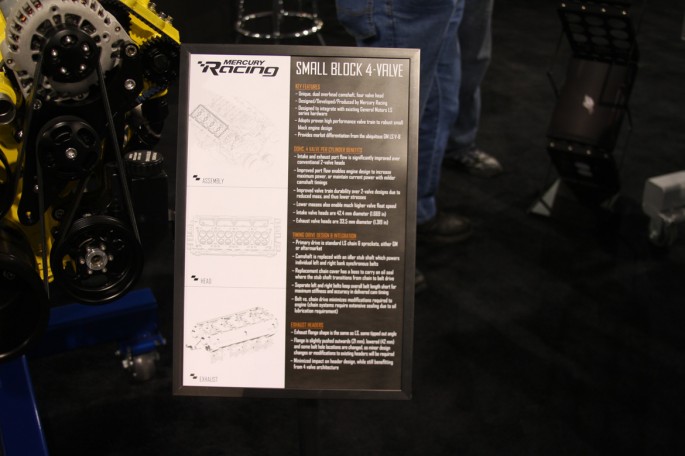
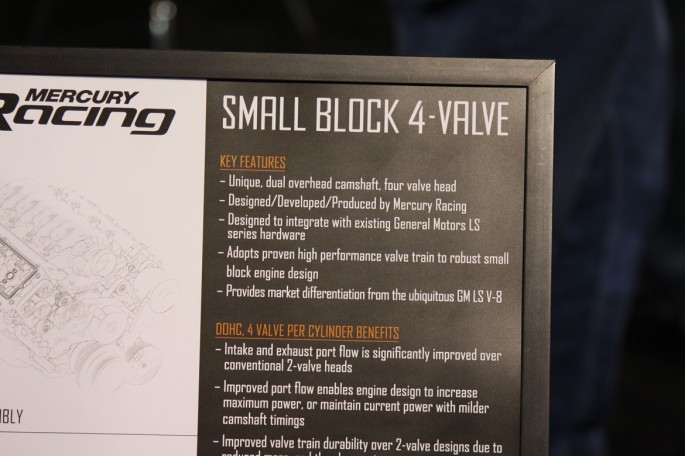


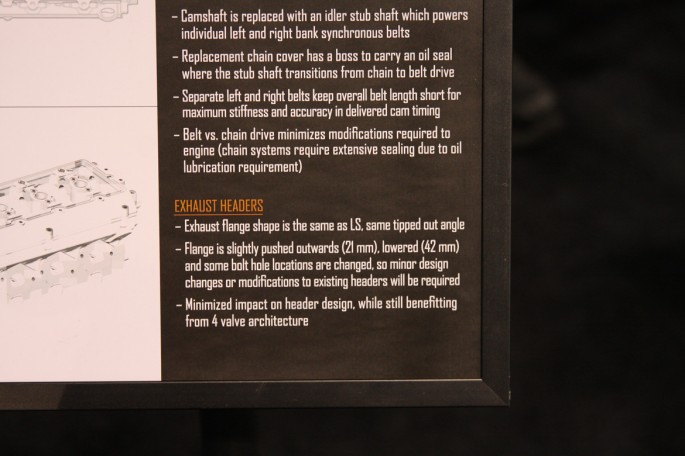
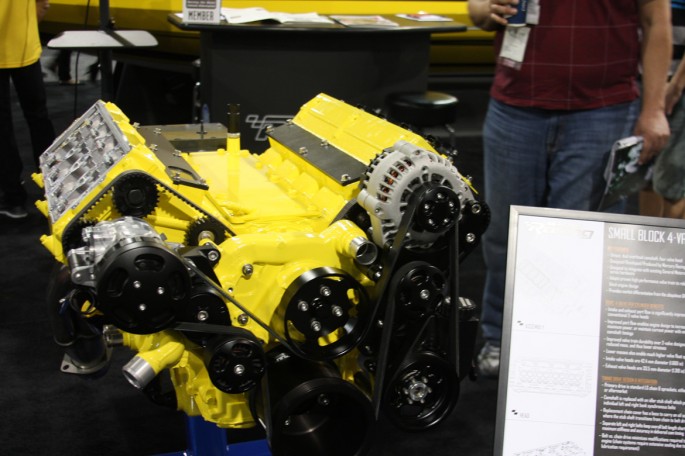
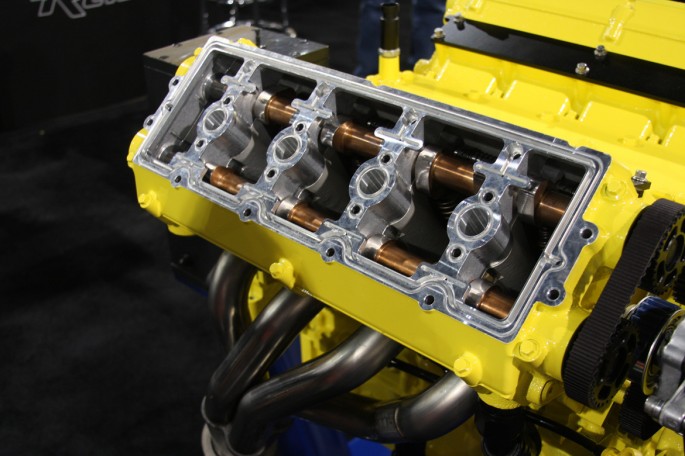
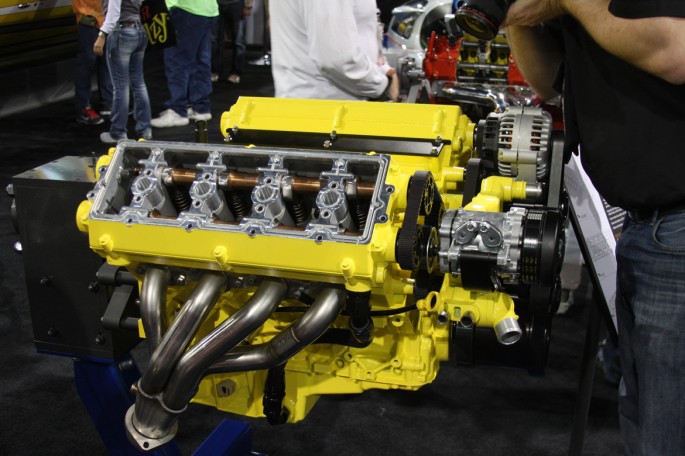
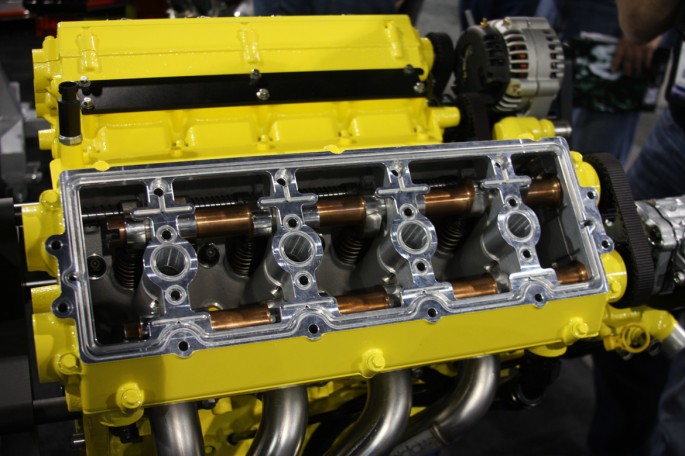
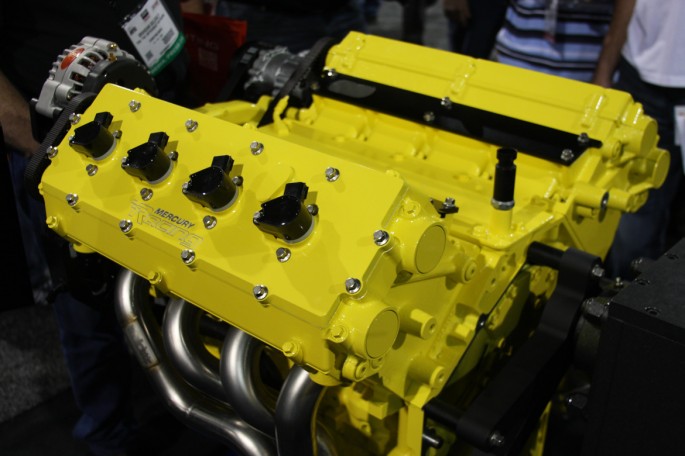
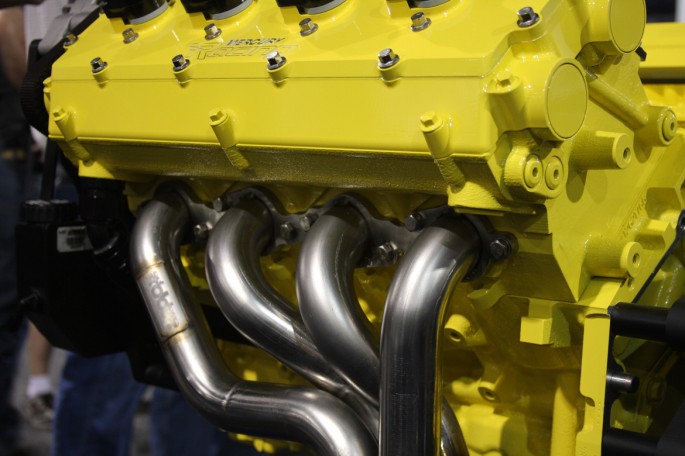





What are the chances these will be less than $10k?
Zero.Zero?
They were quoting $8k for a pair of assembled heads.
I think they built the ZR1 mills back in the 90’s, so no surprise they’d get back in the sack with GM for an updated version. Way cool!
Yes they did build it. I remember pulling them when they failed and having to crate them and return them to Mercury not GM.
I’m amazed Pete Aardema hasn’t had one of these cooked up already.
Mercury is in my home town, they didn’t build the ZRI Engines, but did do the castings for GM.
All Mercury inboards are based on GM short blocks so they have had a relationship with GM for a very long time.
Those heads are nice! And you can bet that the casting quality is second to none. I would also bet they flow a ton of air at very low rpm which would be awesome for a street engine!
True. Mercury Marine did not build the supercharged LS ZR1 engines but they did build the overhead cam ZR-1 engines.
Interesting that the COP’s look to be Ford units…
I’m surprised the “LESS” crowd isn’t over here blathering yet. Anyway, cool to see someone clean sheet another set of heads on to the Gen III/IV/V block architecture. Now we have the Cathedral, LS7, LS3/LQ9, and LT1 from GM and their aftermarket cousins, the Arias Hemi, and DOHC heads.
I’m especially interested in the stubshaft cam since I’m eyeballing the Nissan VQ with its identical bore spacing to the Buick V6 to build a hybrid and would have to take care of the cam and it’s associated oiling issues as well.
These make more sense than those Lt-1/LS1 hybrid heads.
This is a fascinating time for marine engines with GM getting out of building small and big blocks altogether. Marine power companies are looking for alternatives and still be within emission regulations. Look for more neato boat motors popping up in the near future.
Looks like that cam “stub shaft” isn’t there to just plug holes but is used as an intermediary point for the OHC belts to take off from…since the orig. chain (still in there) pulls down on it and the belts pull up, I can see reliability being equal to factory GM, at least. Some will turn their noses up but it looks plenty smart to me as a way to make the DOHC adaptation.
Ford used the exact same stub cam strategy for the 427 SOHC back in 1965
300 hours in my ’13 F150 was only 10000 miles, so 500 would be closer to 15,000
that 500 hour goal is probably full load at WOT
The intermediate step down idea was also used by Porsche on the 911 engine back in ’64. They actually used an odd ratio so the sprockets and chains weren’t always running on the same teeth every rotation. Lots of peripheral benefits to doing it. Can’t wait to see what the hot rodders can do with this!
Nedheads already flow 405+ cfm @ 0.650″ lift…no expensive heads, belts, special headers, or special manifold. They have made 750+ bhp @ 7400 rpm…on pump gas, with hydraulic lifters and stock intake manifold.
It’s also a whole lot of weight at the highest point of the engine. Center of gravity matters in a sports car.
Its not an engine for a car, its a boat engine… it would be creative if someone had it on a car, that’s what this guy’s are commenting. its just a more durable setup on a boat, proven by them on their other famous marine engines
How do you adjust the valves? Do the cams ride directly on the stems or is there some sort of bucket that covers the stem?
I like that there are no rocker arms-the KISS principle but do you have to grind the end of the stem to adjust clearance?
I want this for my C4 project-my concern is hood clearance (other than price).